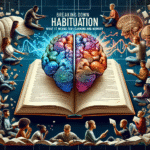Neurodevelopmental Disorders Explained: The Ultimate Deep Dive into Diagnosis and Therapy
Introduction
In a world that constantly evolves, understanding the intricacies of human development is paramount—especially when it comes to neurodevelopmental disorders. With the prevalence of conditions like autism, ADHD, and learning disabilities on the rise, there’s an urgent need for knowledge, insights, and effective strategies for diagnosis and therapy. In this article, we aim to provide a comprehensive exploration of neurodevelopmental disorders, examining their diagnosis and available therapies. Join us as we embark on this informative journey, highlighting essential facts and compassionate approaches that can make a substantial difference in the lives of those affected.
What Are Neurodevelopmental Disorders?
Neurodevelopmental disorders are a group of conditions that manifest during the developmental period, typically before a child enters grade school. These disorders can significantly affect a child’s cognitive, social, and emotional development. Some of the most commonly recognized neurodevelopmental disorders include:
- Autism Spectrum Disorder (ASD)
- Attention-Deficit/Hyperactivity Disorder (ADHD)
- Dyslexia
- Intellectual Disabilities
- Tourette Syndrome
Each disorder comes with its characteristic symptoms and challenges. Understanding these distinctions is crucial for effective diagnosis and therapy.
The Importance of Early Diagnosis
Recognizing the Symptoms
The earlier a neurodevelopmental disorder is diagnosed, the better the chances for effective intervention. Early symptoms can often include:
| Disorder | Common Early Symptoms |
|---|---|
| Autism Spectrum Disorder | Limited eye contact, lack of response to name, restricted interests |
| ADHD | Impulsivity, trouble sitting still, difficulty following instructions |
| Dyslexia | Trouble with reading and writing, inconsistent spelling |
| Intellectual Disabilities | Delayed milestones, difficulty with problem-solving skills |
| Tourette Syndrome | Involuntary tics, movements, or vocalizations |
Case Study: The Impact of Early Intervention
Consider the case of a young boy diagnosed with ASD at age three. With early intensive behavioral therapy (IBT), he exhibited remarkable improvements in social skills and communication. His academic performance improved significantly upon entering school, demonstrating the life-altering effects of timely diagnosis and intervention. This reiterates why understanding neurodevelopmental disorders is essential—not just for the individual but for families and communities as a whole.
Neurodevelopmental Disorders Explained: The Diagnosis Process
The Diagnostic Criteria
The process of diagnosing neurodevelopmental disorders is often multifaceted and requires a comprehensive evaluation. Clinicians utilize standardized assessments that focus on behavior, development history, and cognitive functioning.
- Clinical Interviews: Engaging discussions with parents or guardians about the child’s development history and day-to-day behavior.
- Behavioral Assessments: Standardized tools like the Vineland Adaptive Behavior Scales are employed to gauge social skills, communication, and daily living activities.
- Medical Evaluation: Ruling out other medical issues or conditions that may contribute to the observed symptoms.
A Multidisciplinary Approach
Effective diagnosis often involves a team of professionals, including psychologists, speech therapists, and occupational therapists. This collaborative approach ensures a holistic view and aids in pinpointing the specific needs of the individual.
Neurodevelopmental Disorders Explained: Therapy Options
Types of Therapeutic Interventions
Upon diagnosis, various therapeutic strategies can be adopted. Let’s explore some of the most prominent options available:
1. Behavioral Therapy
Behavioral interventions, particularly for conditions like ADHD and ASD, emphasize modifying specific behaviors and enhancing communication skills. One popular method is Applied Behavior Analysis (ABA), which has shown proven results in improving social behaviors in children with ASD.
Case Study: Success with ABA Therapy
A child named Lizzy, diagnosed with ASD, underwent ABA therapy for two years. Her progress included improved social interactions and increased verbal communication, underscoring the effectiveness of structured behavioral interventions.
2. Speech and Language Therapy
For children with difficulties in communication, speech therapy is vital. These sessions help improve language skills, both verbal and non-verbal.
3. Occupational Therapy
Ongoing challenges with daily living tasks can be addressed through occupational therapy, which focuses on enhancing fine motor skills and daily life activities.
4. Medication
For some neurodevelopmental disorders like ADHD, medications can lead to significant behavioral improvements. Stimulant medications such as methylphenidate can help manage impulsivity and attention difficulties.
Table: Comparative Effectiveness of Various Therapies
| Therapy Type | Effectiveness for ASD | Effectiveness for ADHD | Effectiveness for Dyslexia |
|---|---|---|---|
| Behavioral Therapy | High | Moderate | Low |
| Speech Therapy | Moderate | Low | High |
| Occupational Therapy | High | Moderate | Moderate |
| Medication | Low | High | N/A |
The Role of Family Involvement
Active participation from families is crucial in the therapeutic process. Engagement strategies can include:
- Family counseling
- Parent training programs
- At-home practice of strategies learned during therapy
Visualization of Neurodevelopmental Disorders: Infographic
Creating infographics that detail the symptoms, diagnosis process, and available therapies can help enhance understanding. By presenting data visually, we can make complex information more digestible. Below is a brief visualization to illustrate the connection between diagnosis, symptoms, and therapies.
Beyond the Basics: Recent Advances in Research
Ongoing research continuously unveils new insights around neurodevelopmental disorders. Studies focusing on genetic factors, brain structure, and the effects of early life experiences are painting a clearer picture of these complexities.
- Genetic Studies: Indigenous gene variations linked to ASD and ADHD are being explored.
- Neuroimaging Techniques: Advanced imaging methods are identifying structural differences in the brains of individuals with these disorders.
This research is significant as it may lead to more precise diagnostic criteria and tailored therapeutic strategies in the future.
Conclusion
Understanding neurodevelopmental disorders is not just about diagnosing and treating symptoms; it’s about creating a supportive environment for growth and potential. By embracing early diagnosis and personalized therapy options, families, educators, and healthcare professionals can foster a transformative journey towards improved quality of life. As we continue to delve into this intricate field, let’s aim to inspire hope, insight, and proactive engagement with the neurodevelopmental challenges that many face.
FAQs about Neurodevelopmental Disorders
1. What is the main cause of neurodevelopmental disorders?
The causes of neurodevelopmental disorders are multifactorial and can include genetic predispositions, environmental factors, and complications during pregnancy or birth.
2. How are neurodevelopmental disorders different from mental health disorders?
While neurodevelopmental disorders typically arise during the early developmental period and focus on cognitive and social skills, mental health disorders can develop later and involve emotional and psychological aspects.
3. Can neurodevelopmental disorders be prevented?
While not all neurodevelopmental disorders can be prevented, certain factors, such as proper prenatal care, reducing exposure to toxins, and minimizing complications during pregnancy, can mitigate some risks.
4. Are there support groups for families of children with neurodevelopmental disorders?
Yes! Numerous support groups and organizations provide resources, guidance, and community for families facing similar challenges. Engaging in these networks can be immensely beneficial.
5. How important is early intervention in neurodevelopmental disorders?
Early intervention is crucial as it can significantly improve outcomes, enhancing the development of social, communication, and academic skills and overall quality of life.
This comprehensive exploration of the topic "Neurodevelopmental Disorders Explained: A Deep Dive into Diagnosis and Therapy" aims to provide not just information, but hope and clarity for families and individuals affected by these complex conditions. Understanding and engagement can transform lives, fostering brighter futures for those who may otherwise struggle in silence.















